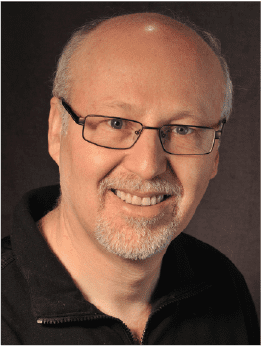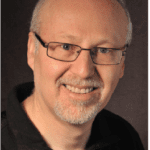Back to Basics | January 2016 Hearing Review
One of the most enlightening aspects of our field is getting the meaning of something defined correctly. A definition, especially if it is incomplete, can be as problematic as it is helpful. I recall first learning about sound in junior high school, and how the correct definition had three components: a vibrating source, a medium for the vibration to travel in, and a receiver.
Let’s talk about the nature of the receiver. What if the receiver were only 99% accurate? What about 90%, or even 10%? What if the receiver was Deaf or deafened? Does that change the nature of the sound? Should sound depend on a person’s perceptive qualities?
A definition that is based on the existence or non-existence of something is discriminatory. Do only people with normal hearing get to define whether there was a sound? A better definition of sound has two components: a vibrating source and a medium. Specifying the requirement for a “receiver” is silly and results in discussions that have no relevance to anything. It is always best to rethink the definition in light of new material or new ideas.
I often run into elements of definition that cloud the discussion, and others that are of minor relevance. For example, “intensity” and “sound level” are two completely different things, but are frequently used to refer to the same thing—it’s a matter of definition, but unless the audiologist is working in the realm of noise control in a factory, it’s a difference that makes no difference. Sound level is a sound pressure, whereas intensity is a vector quantity of energy and its direction. Each of these uses different units, but for the everyday work of a clinical audiologist, they can be erroneously, but benignly, interchanged.
That is not to say that a definition is not useful. I would argue that, indeed, it is. Take, for example, the definition of “dynamic range.” In a 16-bit hearing aid system, the dynamic range is, at best, 96 dB. Many people and manufacturers of hearing aids misuse this to mean the maximum allowed is 96 dB SPL. However, if one truly understands the definition of dynamic range—the difference between the quietest and highest level that can transduced—then a 96 dB dynamic range can also be from 15 dB SPL to 111 dB SPL, which is a range that is more suited to hearing music through hearing aids. At least one manufacturer has understood the definition and now markets a hearing aid that has a dynamic range that goes from 15 dB SPL to 111 dB SPL, albeit still a 96 dB dynamic range.
Steve Aiken, PhD, Adds His Comments
As Dr Chasin points out, the definition of sound has traditionally included three components: a vibrating source, a medium, and a receiver (ie, someone hearing the sound). I also tend to think that the receiver requirement is problematic.
If a sound needs to be heard in order to be a sound, then it is incorrect to say that hearing aids amplify sounds to make them audible (since they are not sounds until they are audible). It would similarly be incorrect to say that hearing loss makes it more difficult to hear soft sounds, but correct to say that hearing loss may cause soft sounds to stop existing. This is silly. Definitions are only as good as their ability to describe what people generally mean when they use a word. Sound does not stop being sound just because no one hears it, just as light does not stop being light just because no one is looking.
On the other hand, given that we have terms like “infrasound” and “ultrasound,” the possibility of human auditory sensation needs to be part of the definition. Infra- and ultra-sound refer to frequencies that are too low or too high to be heard by human listeners, so are not considered to be sound. There is clearly a species-based bias in the definition, since sounds that are outside of the audible range for humans may be audible to other animals. If we throw away the need for a human receiver entirely, all vibratory energy in any medium—even at frequencies too low or too high to ever be heard—would be considered to be sound. I don’t think this is quite right.
One solution would be to define sound as a vibrating source and medium that could potentially induce an auditory sensation in a human (ie, it is audible to the human ear, but not necessarily heard by a particular human ear). This is the way that light is typically defined—as energy that is visible to the human eye, not as energy that is seen by a particular human eye.
This gets away from crazy philosophical debates about trees falling in the forest, and the need to define sound based on the presence of a listener (with good hearing thresholds), but it saves us from having to define all vibratory energy in a medium as sound. A vibration at 1 kHz is sound, whereas a 1 MHz vibration is not, because only the former has the potential to induce a human auditory sensation.
The next time a friend asks whether a tree falling in a forest produces a sound, even when no one is there to hear it, tell them that the answer is “yes.”
Marshall Chasin, AuD, is an audiologist and director of research at the Musicians’ Clinics of Canada, Toronto. He has authored five books, including Hearing Loss in Musicians, The CIC Handbook, and Noise Control—A Primer, and serves on the editorial advisory board of HR. Dr Chasin has guest-edited three special editions of HR on music and hearing loss (August 2014, February 2009, and March 2006), as well as a special edition on hearing conservation (March 2008).
Steve Aiken, PhD, is an associate professor in the School of Human Communication Disorders at Dalhousie University, Canada. Dr Aiken’s research is focused on assessing auditory function at the level of the brainstem and cortex using evoked responses, particularly in relation to complex (but functionally important) sounds such as speech and music. His core interest is how these objective electrophysiological measures relate to speech sound encoding and speech intelligibility, and how both are affected by hearing aid processing.
Correspondence can be addressed to: [email protected]
Original citation for this article: Chasin M, Aiken S. Back to Basics: A Discussion on Definitions of Sound. Hearing Review. 2016;23(1):12.?







